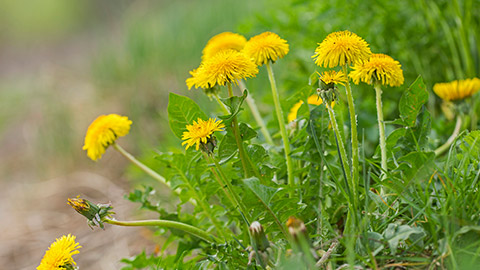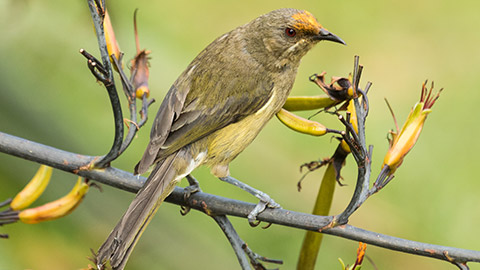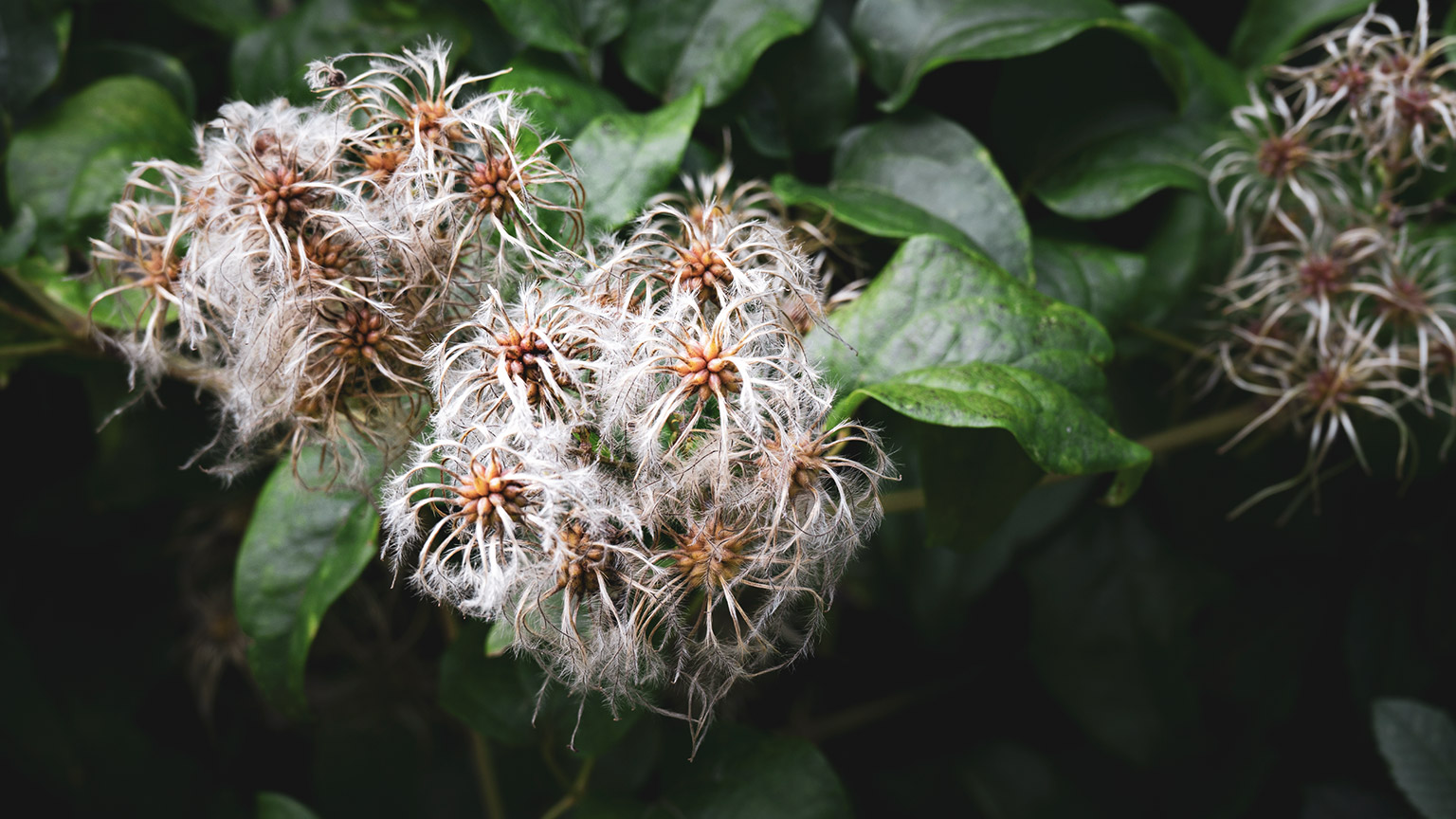According to Waikato's regional council website, "Old man’s beard is generally recognised as the most damaging introduced climbing plant in New Zealand."
Do you remember this commercial? "Old man's beard must go!" It's a testament to how long this pest has been a problem in Aotearoa.
This module is about pests, diseases, and weeds and their impact on plant health. But what do these terms really mean anyway?
Let’s take a step back and review what we already know about these terms.
To ensure we're all on the same page, we'll review what we mean by pests, diseases, and weeds.
Pests
We know that pests may be insects, or larger animals, such as rabbits, hares or possums. We also covered that sometimes these “pests” may be on our plants but not causing a problem to the health of those plants.
Diseases
We also learned that a plant disease is when microorganisms attack a plant and stop it from growing to its full potential. The microorganisms may be bacteria, viruses, fungi or other types.
We have also discovered that the soil food web is a complex system of interactions between living organisms in soil that support plant growth and health.
It includes:
- bacteria
- fungi
- protozoa
- nematodes
- arthropods
- earthworms.
Weeds

Deciding what is or is not considered a weed is a personal choice, like this dandelion (Taraxacum officinale), unless it is so destructive that growing it is forbidden.
At the start of this programme, we learned that weeds can compete with desirable plants for light, water, and nutrients. And then we went into more depth and learned that a weed can be any plant that is growing somewhere we don’t want it to.
And this determination can vary from person to person. For example, one person may see dandelion growing in a lawn and consider it a weed because it’s not a grass plant. Another person may consider it a welcome addition to the lawn by offering flowers for pollinators and leaves that can be picked and used in salads.
We also learned that some weeds are considered noxious weeds, invasive weeds, or pest plants and growing them may be prohibited or regulated by regional councils.

The bellbird (Anthornis melanura) is one of the best-pollinating birds in New Zealand. Here it is enjoying the nectar from mountain flax (Phormium cookianum) flowers. Notice the spot of yellow on its forehead? It's nectar!
Reading the information we provided about the terms pest, disease, and weeds, you may find yourself thinking that our descriptions are too simple, given that the ecosystem is far more complex than that. And if you are thinking this, you make a good point.
For example, for certain fruit plants birds are the main pollinators; without them, the fruit wouldn’t form, at least not without human intervention. But those same birds may well eat the delicious fruit we’ve been waiting for months to ripen on the trees. Should we share the fruit with them or try to keep it for ourselves? They did help the trees set fruit after all.
What about other birds, who may not be pollinators, but who eat insects? They may or may not eat the fruit, but if we cover all of our trees with nets, will those birds stick around? If they leave, who will help keep the insect population down?
Te ao Māori: The Māori worldview
We can learn so much today by looking at the ways Māori interacted with the land, water, plants and animals, before colonisation — and subsequent to it.
The Manawatū-Whanganui Climate Change Action Plan (2023) provides this useful overview of te ao Māori:
“We acknowledge that the Māori worldview has foundations, ethics and understandings that differ from those that developed in Europe and its colonies. These foundations include the notions that:
- The universe is holistic and dynamic; there is within it an ongoing process of continuous creation and recreation.
- Everything in the universe, inanimate and animate, has its own whakapapa, and all things are ultimately linked to the two primal beings of Ranginui and Papatūānuku.
- There is no distinction or break in this cosmogony, nor in the whakapapa between supernatural and natural. Both are part of a unified whole.
- The bond this creates between human beings and the rest of the physical world is both indisputable and non-severable.
- Uri shares this descent from the elemental atua or vast range of environmental entities, other supernatural guardians including taniwha and other spiritual beings.
This worldview has contributed to the development and practice of a unique environmental ethic, which holds Te Taiao [Earth and the environment] as intensely central to human/environmental wellbeing. This ethic is sacred and remains in special places and spaces across the rohe [region]. Tangata whenua relate to Te Taiao through genealogical connections from time immemorial. This is highlighted in meaningful ways because they live it as tangata whenua on their marae and remain embedded within nature.
Māori have traditionally ensured sustainability through the handing down of a sophisticated system of customary practices, developed over several generations. Connections to the land, sea, air, and water are recalled in layers of oral tradition; they are closely linked to customary rights and authority over an area defined by ahi kā. This is the continuous period of time the fires of an Iwi have burned within their domain, undisturbed by conquest and despite the impacts of colonisation and environmental decline. Such long associations establish an intimate relationship between tangata whenua and the local environment, centred on sustainable use and guardianship of all kin therein. Knowledge is passed on to the next generation through oral traditions and practical observations – practices that remain vital for Māori wellbeing and cultural survival.”
Sustainable practice
The unbreakable links between humans and other entities (animals, plants, the soil, the air and water and so on) drive sustainable, ecological horticultural practices.
Activity – A quick look at time-tested sustainable practices
Progress through the slides using the navigation under the activity.
Recent history: The western approach
In his book, The Complete Gardener, English gardener and TV personality, Monty Don, reflects on our changing view of “pests”:
Don, 2021Fifty years ago almost all living creatures that were not pets or producing eggs or meat were grouped as ‘pests’ and a measure of a gardener's skill was how effectively he or she killed them off.
The concept of a holistic, integrated garden was at best eccentric and, much more commonly, viewed as incompetent.
In truth, I like to think of every little bit of this garden attracting as wide and varied a range of creatures as possible. I accept that some of them do not have my best horticultural interests at heart and others do not exist solely for my own entertainment or delight. In return, I hope they tolerate my presence as another bit of wildlife sharing the same space.
In a sense, the goal in both gardening and commercial horticulture was, and in many cases still is, about “putting nature in its place.” Containing the types of plants being grown and the locations they are grown in. Anything that isn’t deliberately grown for a purpose should be removed and all pests and diseases should be controlled to encourage maximum yield.
Modern concepts in horticulture
Fortunately, these views are changing. As we learned previously, consumers are voting with their wallets, by choosing products that have been grown organically. In many cases these products are grown in polyculture systems, which try to “mimic the diversity of natural ecosystems” (Wikipedia contributors, 2023a).
This is happening in related industry sectors too, such as landscape architecture and design, which is seeing growth in the number of projects that incorporate ‘ecological design.’
In a food growing context, Stefan Sobkowiak comments that:
It's all about creating a relationship of conscious cooperation with nature so that every living being benefits.
To sum it up, in this module, we’ll be focusing on:
- insects (some of which may be pests)
- plant microorganisms (some of which may be diseases)
- other plants (some of which may be weeds).
